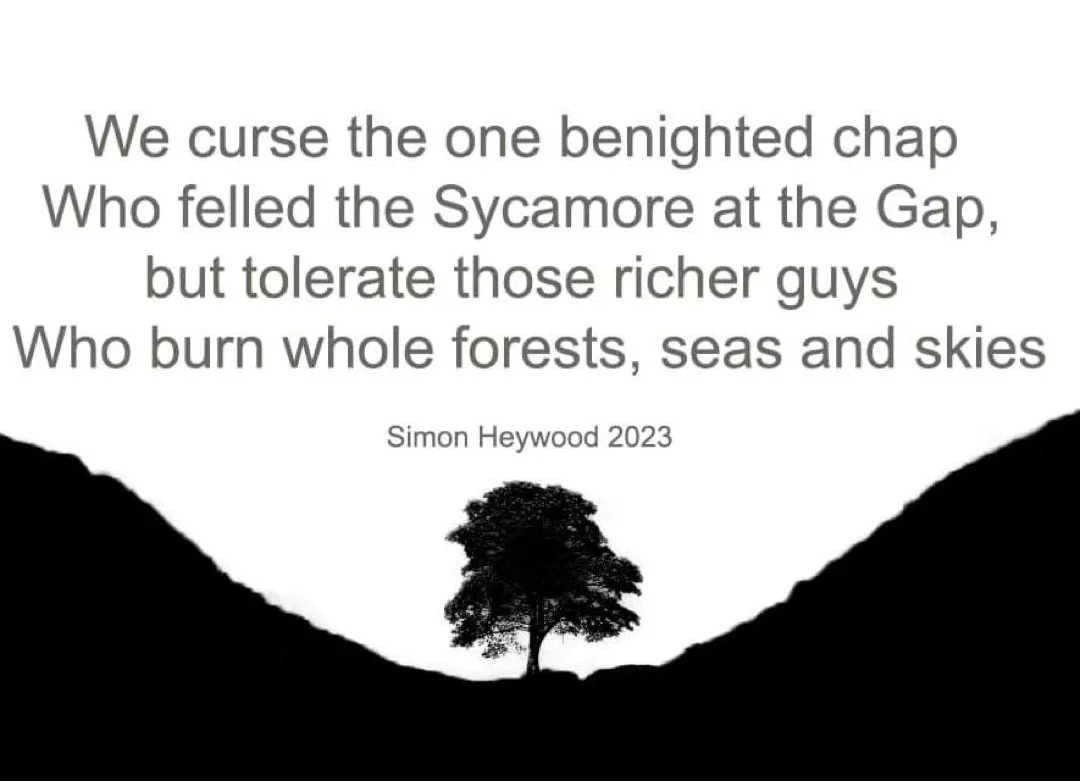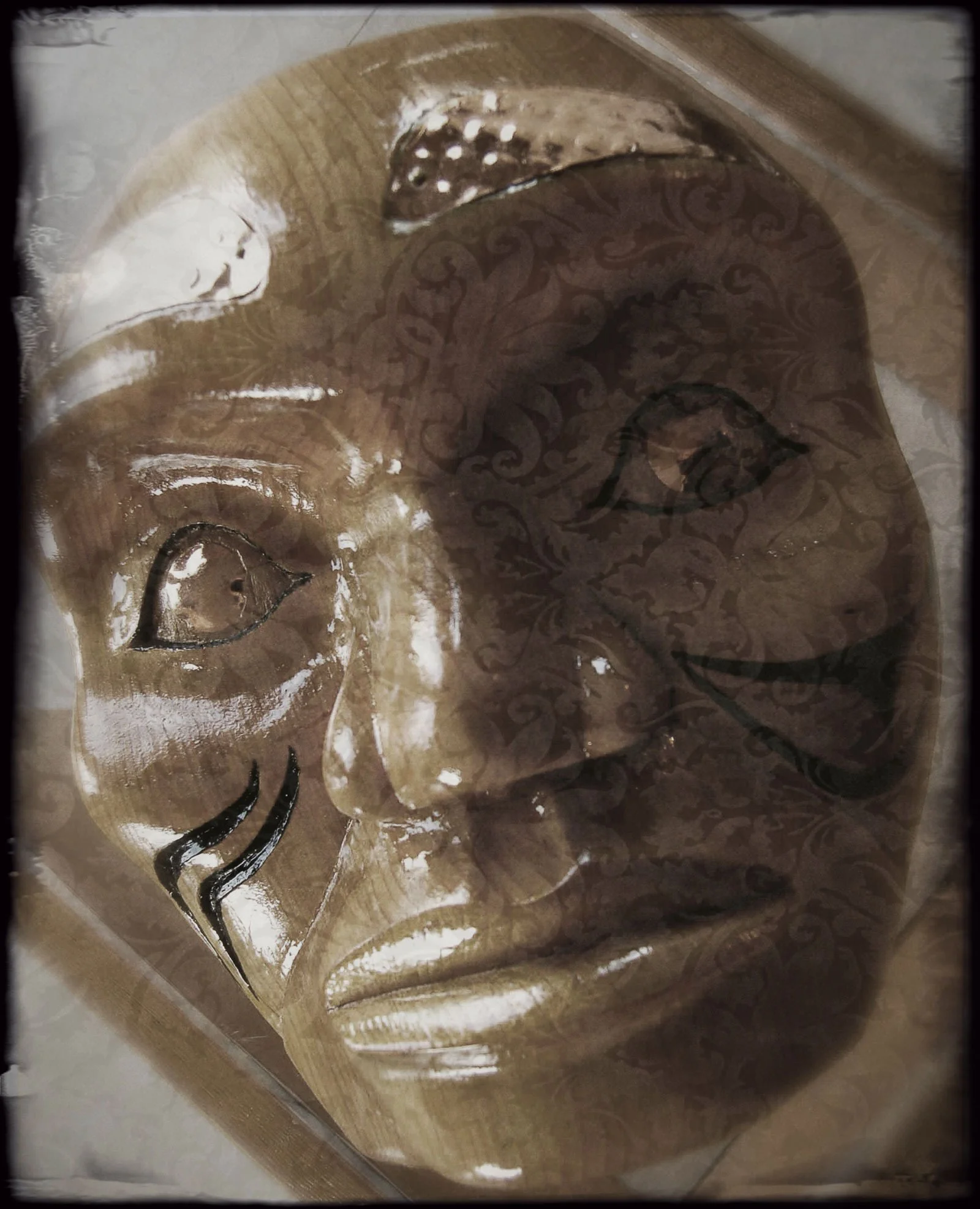On Myths & Madness
How Do Stories Work?
Part 5 Notes on Domicide and ‘madmen’ bearing chainsaws
“I didn’t enjoy butchering this magnificent creature, but you apparently need a wake-up call that even you should be able to understand.”
-Grant Hadwin
Dear Storyteller,
Domicide is the act of destroying one’s own home. It can also be a tendency, carried out through the repetition of thousands of hidden actions, mostly out of sight and out of mind.
I’ve been wanting to write a post on this subject for a while, but have been holding back, waiting for a triggering moment. And last Wednesday that moment arrived when the Sycamore Gap came crashing into the cosy living room of our collective imagination.
The loss of a beautiful lone tree fuelled a predictable outcry. The media fuelled the outrage, baying for the punishment of some ‘degenerate youth’, before pivoting to turn with less outrage on a ‘crazy old man’, perhaps a ‘former lumberjack’.
What is it about one tree that causes us such outspoken agonies while the destruction of the wider world continues unabated with passive acceptance? Could this have something to do with the power of the totem, working as symbolic pressure valve to channel and dissipate our collective sense of grief and loss at the destruction of our home, releasing our outrage so we can return to business as usual?
When I heard the news, my first thought was not for the tree but for the person who had chopped it down. What could have been their motivation? For this must have been a carefully planned act, and so can’t be easily dismissed as some moment of ‘madness’. No, to me, this felt like a howl of pain, a wake-up call that I recognised immediately.
In 2007 I started a 7-year filmed investigation into the motivations of another ‘environmental terrorist’, who orchestrated another attack on an ancient tree in an apparently mindless ‘crime against nature’.
But it was not that simple.
Desperate Times Call For Desperate Actions
On the islands of Haida Gwaii, a remote archipelago off Canada’s Pacific coast, stood a giant and genetically unique Sitka Spruce, known to the indigenous Haida people as ‘K’iid K’iyass’. Owing to the unusual yellow pigmentation of its needles, outsiders called it ‘The Golden Spruce’.
There it stood on the banks of the Yakoun River for 250 years, protected from the enveloping tide of industrial logging in its own protected reserve, complete with tourist trail and signage. Until one night in January 1997, when a lone former logger and timber engineer called Grant Hadwin arrived under the cover of darkness to cut it down.
For the Haida, ‘The Golden Spruce’ was much more than an object of scientific curiosity, a beautiful ‘freak’ of nature. For them this was a mythical being, a boy transformed into a tree, a sacred elder that stood as a wonderous manifestation of the connectedness of all things- a kin-centric belief system.
And Grant Hadwin, himself an instrument of the system of industrial extraction, had come to destroy it in a self-proclaimed act of protest. What kind of madness was this?
This is an extract from the letter that Grant wrote to the authorities justifying his actions:
Dear Sir or Madam,
I don’t care much for ‘freaks’ whether they teach in University classrooms, sit in corporate board rooms, perform in the circus or are put on display as examples of old growth forest.
I mean this action to be an expression of my rage and hatred towards university trained professionals and their supporters whose ideas, ethics, denials, part truths and attitudes appear to be responsible for most of the abominations done towards life on this planet made in the name of ‘progress’.
I didn’t enjoy butchering this magnificent creature, but you apparently need a wake-up call that even you should be able to understand.
It was challenging to leave this majestic plant in a temporary vertical position. The next storm will cause this one thousand year old plant to fall into or near The Yakoun River. Please find enclosed some of the last known photographs of ‘The Golden Spruce’.
Yours truly,
Grant Hadwin.
And this was my film interpretation of the aftermath of what had happened:
What insight might this story give us into the mind of the individual that took down our cherished Sycamore?
And what does this particular choice of totem, the lone tree left standing in a sea of devastation, tell us about the timeless forces of corruption at work on humanity, and about our separation from the land, our natural home?
Two Solitary Trees And The Legacy of Extraction
The Golden Spruce came with its own ancient mythology that begins with the murderous arrival of the Europeans in 1774. The British came bearing ‘gifts’ of blankets laced with smallpox, hoping to wipe the indigenous people from the face of their land. 70% of the Haida population died in the enveloping plague, with lone survivors retreating into the sanctuary of the forest. Among them were a village elder and his grandson. As they fled the village, the boy ignored his grandfather’s advice not to look back and found himself rooted to the ground, a boy transforming into a tree.
Spirit Mask of K’iid K’iyass, AKA 'The Golden Spruce', a boy transformed
And there K’iid K’iyass stood for 250 years, one tree preserved by the logging company as a living cultural artefact, while the rest of the ancient forest was cut down and hauled to the mill, first as masts for ships of war, and then to build the frames of aircraft that brought death from the skies.
And the Sycamore Gap bears the same legacy. A lone tree, left in a sea of devastation, the land wiped clean by the civilising forces of Rome as far as the wall of Hadrian, built to keep out the savages who still lived from the land and who resisted agriculture, taxation and wage slavery. The wall was there to keep the money economy of Rome safe and sound until the empire burned under Nero, incinerated by the flames of its own self-serving corruption and arrogance.
How do stories work? A newsletter for storytellers, changemakers and dreamers:



